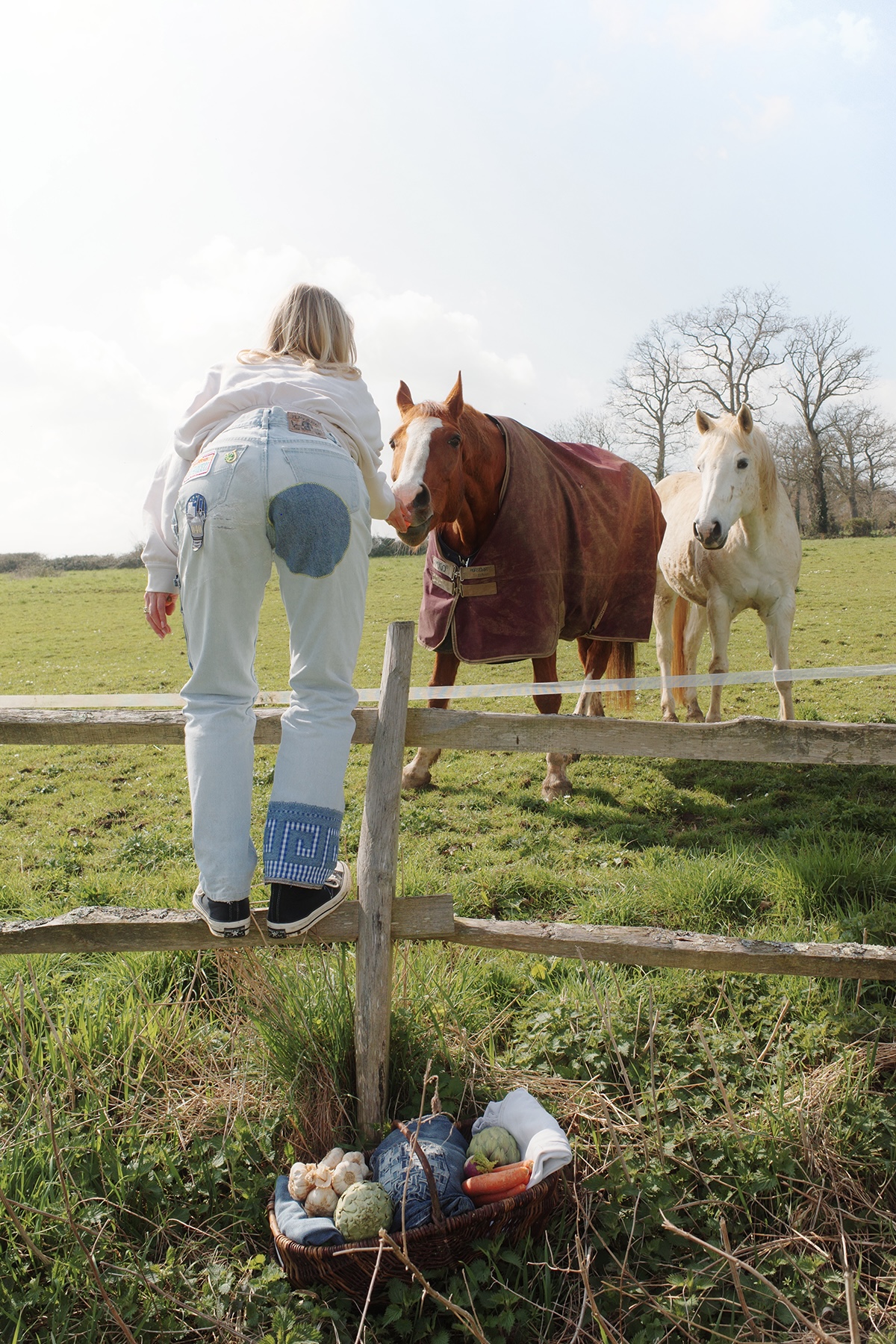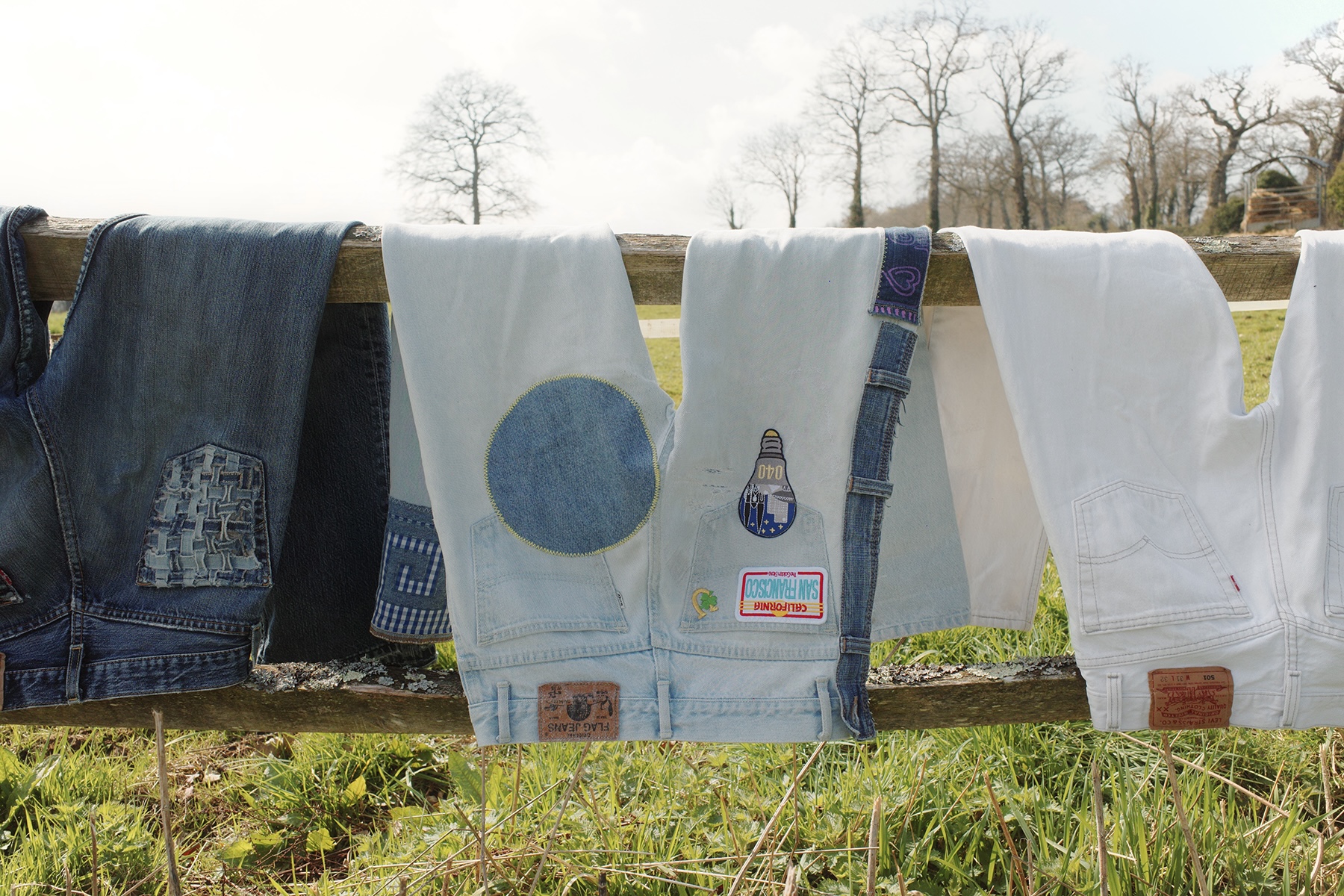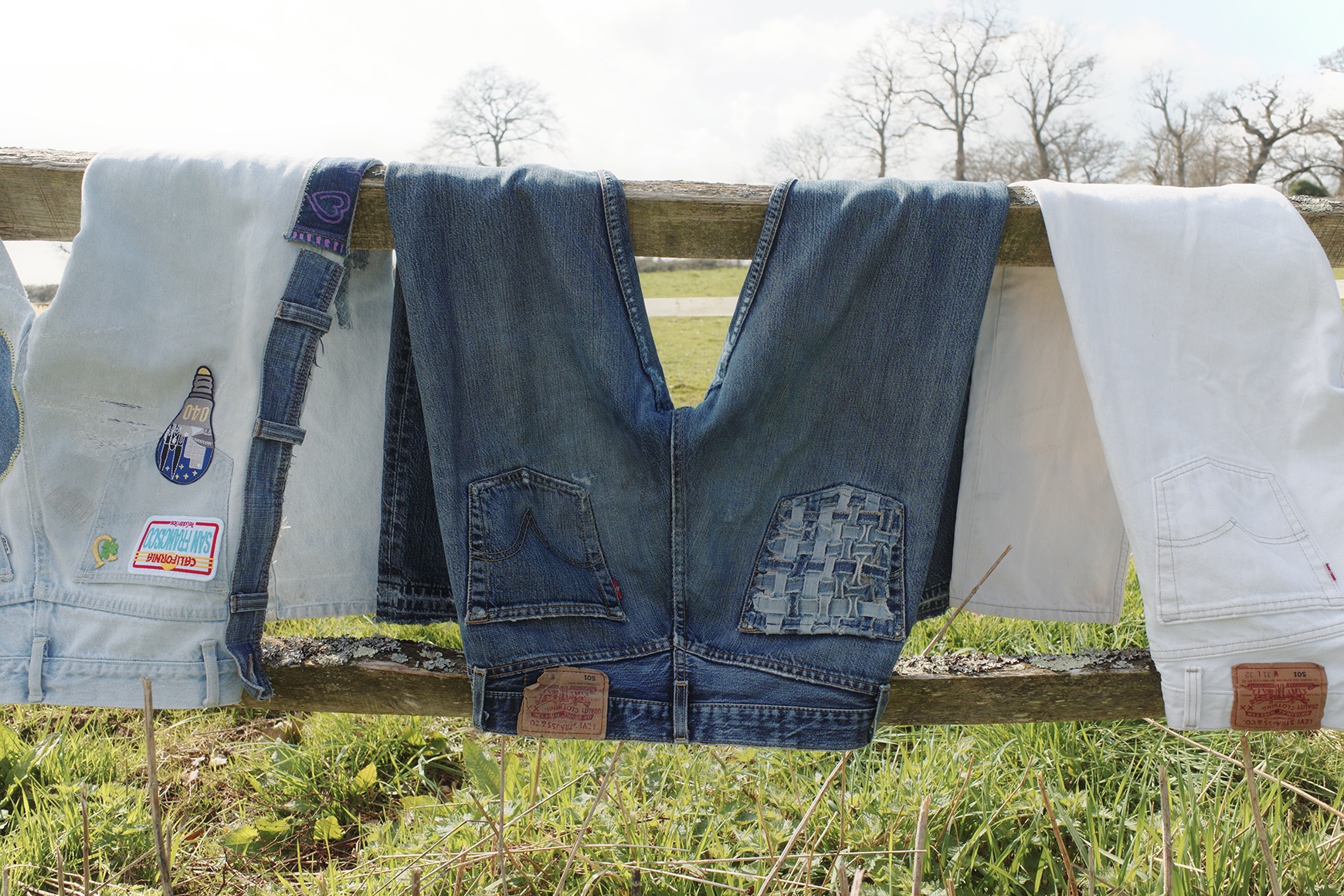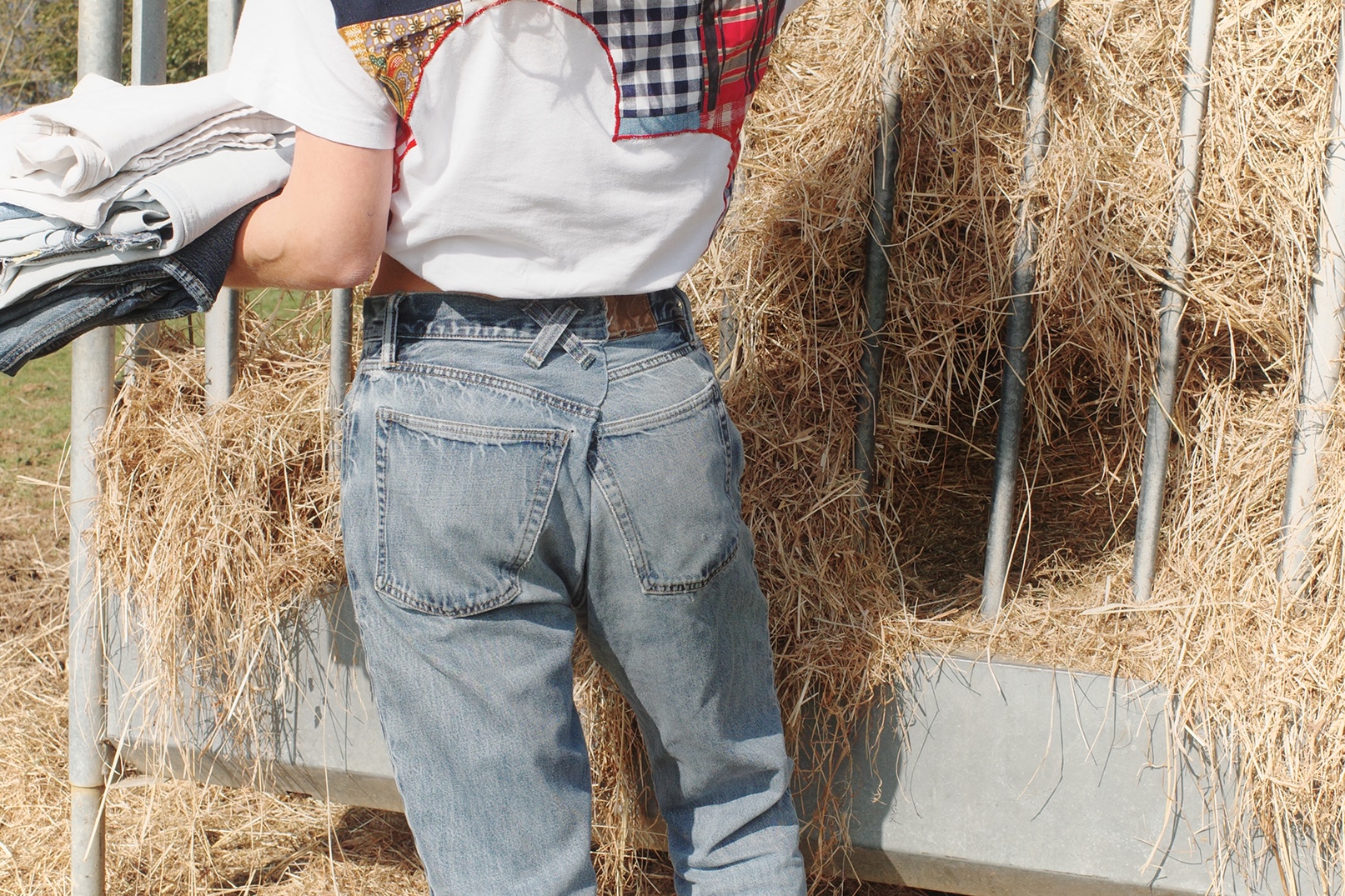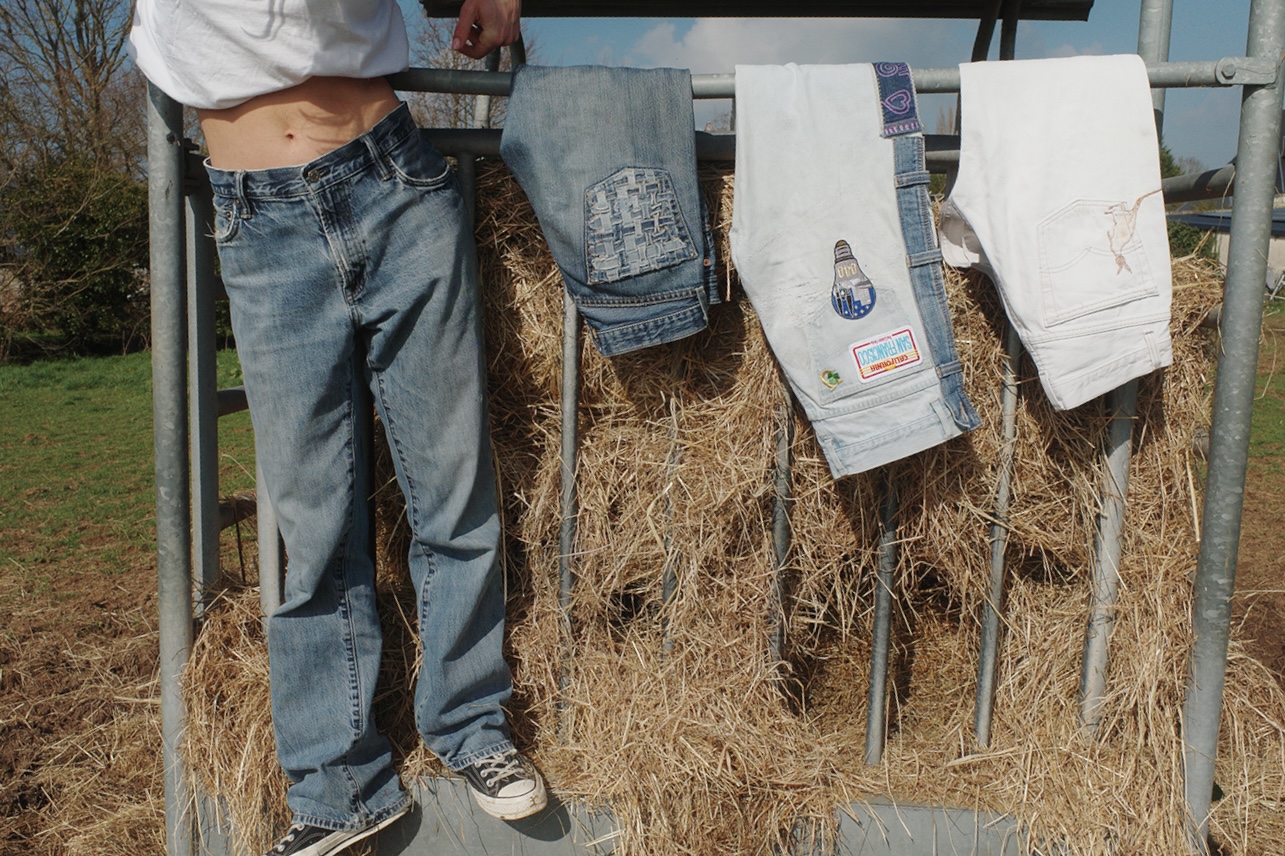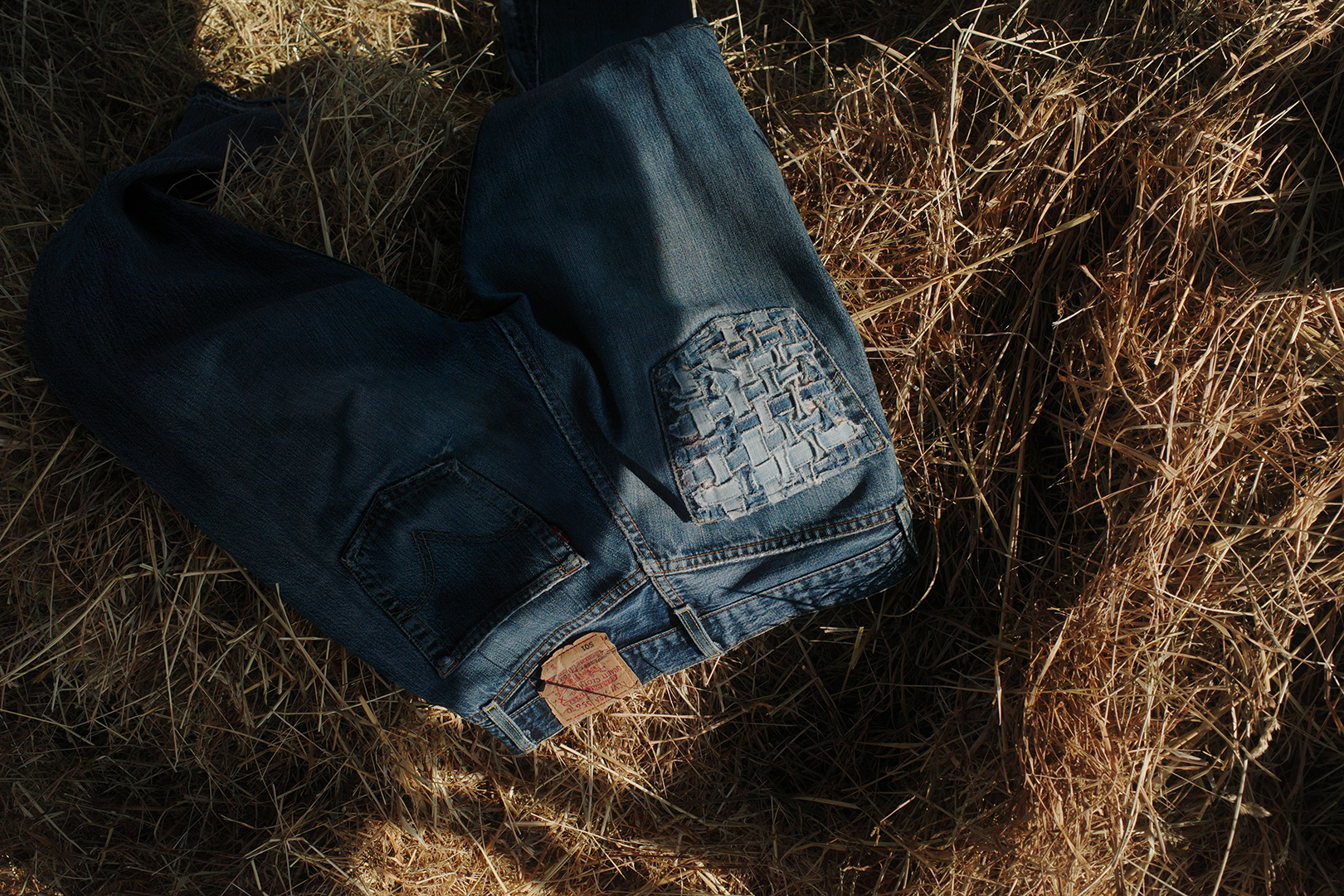Jeans Re-incarnation


The Subtle Art of Mending
Nothing feels as horribly tragic as when your favorite pair of jeans gives out. Good, well-fitting jeans are an extension of who you are. When a pair tears beyond wear, it feels like a little piece of you is missing.
Personally, I've always been drawn to vintage jeans. The quality and the firm non-stretch denim just makes them look better, in my opinion. And I’ve been lucky: I have a good connection to the vintage gods, and some long-legged loved ones who struggle to find the right length. Their failed purchases end up in my, not-so-long-legged, closet. Some of my most beloved jeans started as someone else's bad fit.
Patterns and Models
Within my extended family of jeans, these are the honorable mentions.First up: a pair of bootcut Levi’s I found at a Paris flea market when I was eighteen. I wasn’t into the bootcut at that time, but it fitted so well that I had to take it. So we opened the side seams up to the knee and added triangular inserts of jeans to create flared bottoms. We even extended the length by reworking the seam. In a wild, creative mood (boredom), I created a woven patch made out of jeans scraps. That mom kindly applied to the bum pocket.
.png)
Then there’s the white vintage Levi’s I inherited from a friend. She’d bought them secondhand but decided they were too short. I managed to stain them while cooking something red and oily, right on the back. After countless cleaning attempts, Mama had another solution. She embroidered a kangaroo over the stain. A perfect example of visible mending, and still one of my favorites.
.png)
Another treasure: my dad’s old baggy jeans. The legs were perfect, but the seat was huge (I’m not fatshaming you, papa!). We cut straight down the back and overlapped the fabric like wrapping a gift. We reattached the belt loop in the center, and now it fits perfectly.
Baggy butt, beautiful fit.
%20gcpss.png)
And then there’s my all-time favorite pair, now lovingly called the walking dead pants. Another Paris find, worn and mended so many times that every time I wore it, a new rip appeared. No matter how hard I tried to deny it, the pants kept 'bagging' for retirement. Then we decided to make them a mending example. They’re now a collage of every repair technique we know. I use them as my painting pants now, a nice compromise before pensioning.
.png)
The Fabric
Martine: “Jeans seem to be the ultimate material for upcycling. The blue only becomes more beautiful as it wears and fades, the indigo revealing new depths with every wash. Once, indigo dye was more expensive than gold, and it still holds a special place in many cultures. And then there’s the romance of jeans themselves: gold diggers, working class, hippies, rockers, punks. What subculture hasn’t claimed denim as its own?
When I was a teenager, all I wanted was a pair of Roy Rogers, because I wasn’t a Levi’s or Wrangler’s kind of person. But those were far beyond what our household could afford. My eldest brother, extremely tall and thin, needing a rare 30/38 size, started making his own jeans at around 14. At first, with our mother’s help, soon, entirely on his own. I learned alongside him. We did everything we could to make them look like the real thing. I think we spent less than twenty guilders (about 20 euros in today's money) and three hours to make a pair.

Repairing jeans back then was modest and mostly visible: replacing large parts of the knees or seat panels with new material. When you make your own clothes, you always have scraps, treasures, really. I collected them whenever I could, secondhand or otherwise, and turned them into bags, cushions, pencil cases, skirts, tops, anything and everything.
Holes and tears tend to grow, but so do the stories in every pair. Precious jeans: storyteller, memory keeper, and holy grail of upcycling. Here’s one more golden rule I live by: whenever I’m puzzling pieces of fabric together and they just won’t fit, I tell myself:
When in doubt, add jeans. 💚
Execution
Invisible mending is about making a repair disappear. For generations, it was considered a skill to repair so finely that no one could tell. My mother-in-law mastered this; her old samples still leave me speechless.
Visible mending, on the other hand, celebrates the break. Think of the Japanese art of Kintsugi: cracks repaired with gold, making something more beautiful because of its history. Embroidery, patches, bold stitches, with visible mending, you turn a flaw into a feature.
Both approaches have their place. And both can give your jeans another chapter.
Tips for giving your jeans a second (or third) life:
Nowadays, visible mending is often seen as a form of protest against consumerism, (Jeans jumped from workwear to being a symbol of 1950's rebellion. Think Marlon Brando, James Dean and Marilyn Monroe. So they have a long association with rebellion) and I love that. So, what do you need to know when you repair your jeans?
1. Just start, there’s nothing to lose, the jeans are broken anyway.
2. Use a jeans needle on your sewing machine! It makes life so much easier. Replace your needle regularly (every 10 hours of sewing, approximately). Almost every troubleshooting list starts with: replace the needle.
3. Keep old jeans and scraps for patches. My favorite method is to put a patch of second-hand denim under or over the tear and zigzag it firmly. I prefer blue thread, so it doesn’t stand out too much. If the fabric is very torn, use adhesive fleece or even a simple glue stick to hold it in place before stitching. Water-based glue will wash out.
4. Play with different shades of blue.
5. Browse socials for ideas that spark joy and inspire you.
6. If a spot is hard to reach, seam rip one side seam for better access. Take the side that’s stitched more simply. And sew it back together after.
7. Thick repairs need care. When jeans have been repaired a lot, the material can get thick. Make sure to dry them well after washing. Frequent washing isn’t necessary; airing them out works great. A balcony or open window is ideal. I’m no fan of dryers.
8. Start small with patches, and when you feel ready, it will get more fun to replace larger areas. I’ve even replaced entire crotches.
9. Check if the jeans are worth the time investment. Edges of the patch need to sit on sturdy fabric; otherwise, the next tear might show up within an hour of wear. Also, think about how the jeans will be used afterward. Carpentry, catwalks, or horse riding all demand different durability.
10. Pre-wash old jeans. Even washing thrifted jeans five times before use still saves a lot of water and resources compared to buying new ones. Personally, I usually give them one wash and let them dry outside in the wind.
When in despair, learn to repair. Mending isn’t just fixing. It’s telling a story. Whether you choose invisible finesse or bold visible stitches, mending is a skill, a mindset, and the little act of rebellion against our fast consumption and throwaway culture, that your jeans deserve!
Styling
It’s jeans, you know what to do with them. Pair them with whatever makes you feel most yourself. The beauty is in their history and the experiences you’ve lived in them. From first dates to funerals, (and first dates that felt like funerals) mine have always been there for me.
> Looking for ideas? Check out our Pinterest board for inspiration.
>> Ready to give your jeans a second life? Join one of our upcycling workshops!
>>> Curious to see more patterns? Shop them at www.meuck.shop.
What’s the story behind one of your favorite repairs? Let us know, we’d love to share it.



